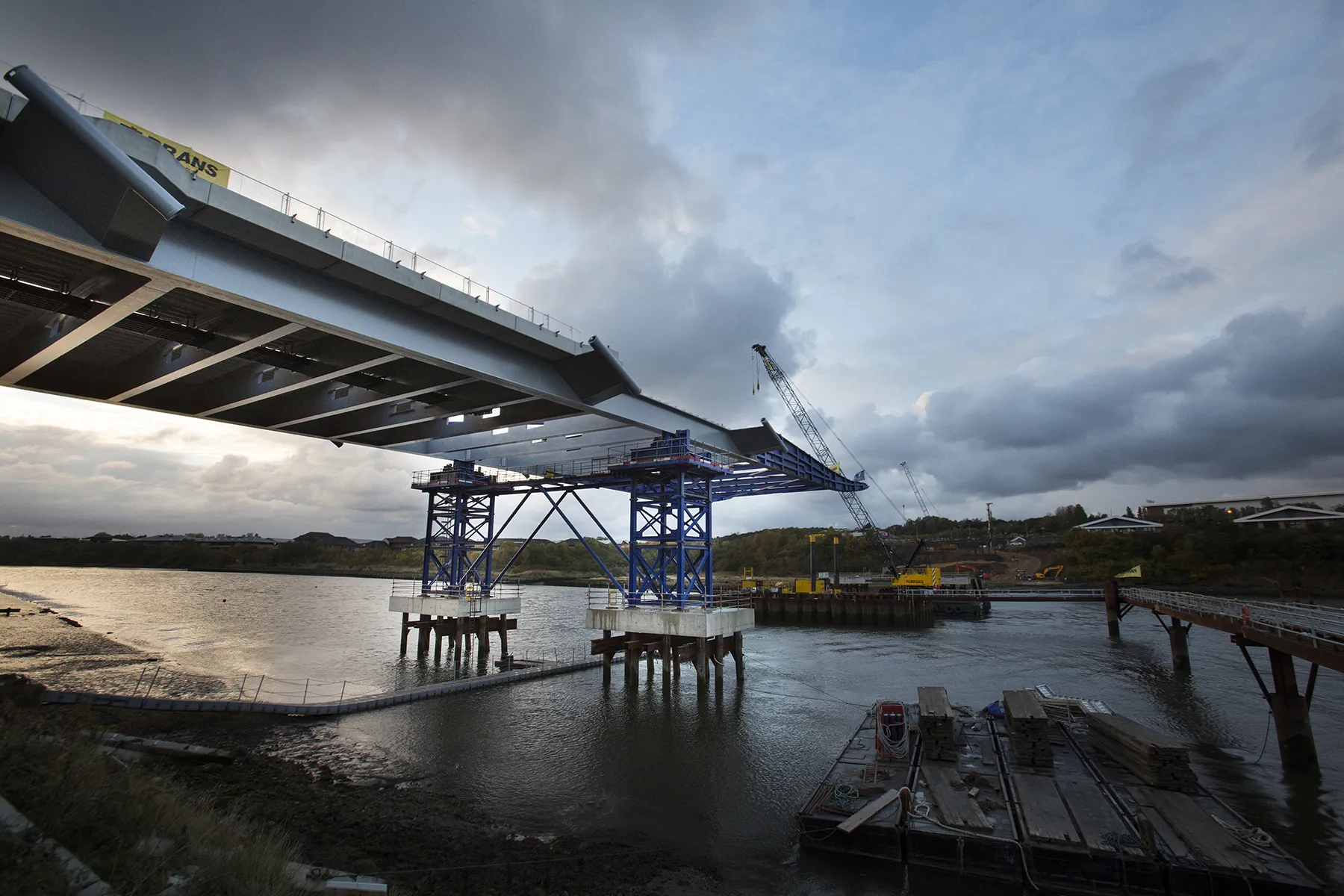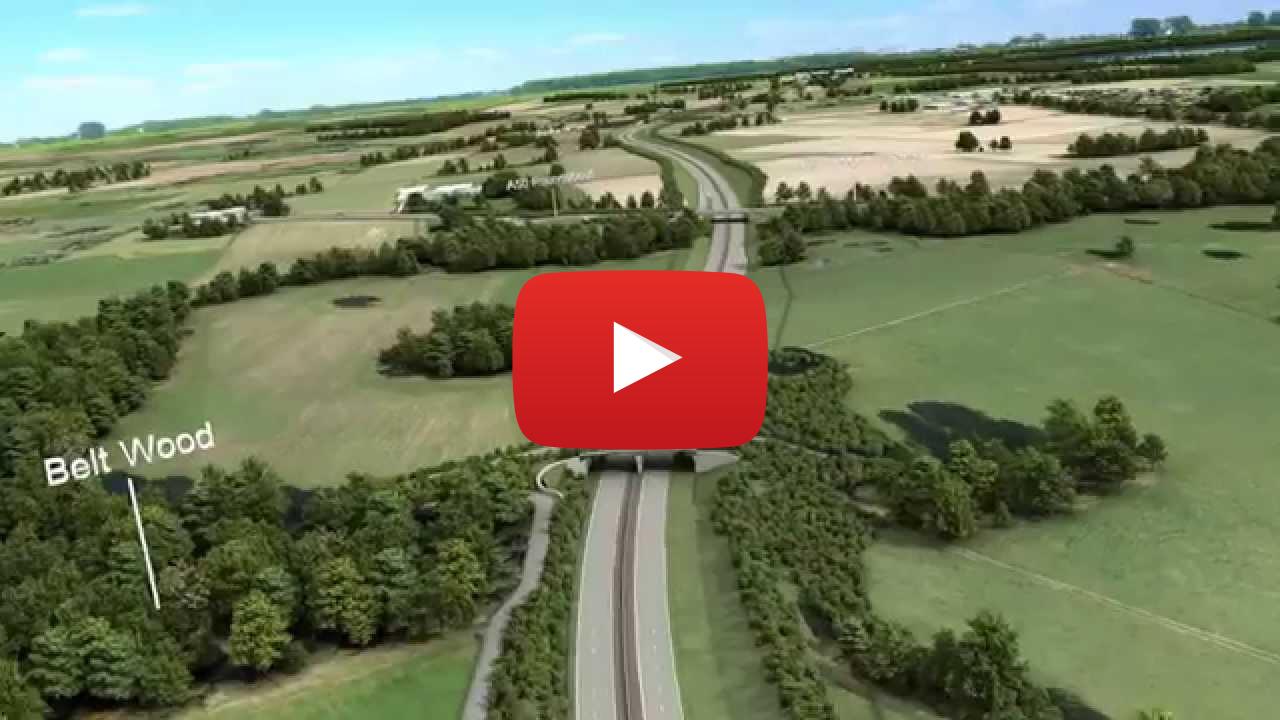Slowly but surely, a 2,500 tonne section of a new bridge deck was eased out from the banks of the River Wear near Sunderland in northern England. It now straddles the water, pointing towards the opposite bank which it will eventually reach after another sliding operation next year likely.
The project to build the New Wear Crossing is now half way through with the first half of the steel deck bridge poised mid-river. Completion of the bridge is expected in the spring of 2018.
This month, hydraulic jack
October 26, 2016
Read time: 2 mins

Slowly but surely, a 2,500 tonne section of a new bridge deck was eased out from the banks of the River Wear near Sunderland in northern England. It now straddles the water, pointing towards the opposite bank which it will eventually reach after another sliding operation next year likely.
The project to build the New Wear Crossing is now half way through with the first half of the steel deck bridge poised mid-river. Completion of the bridge is expected in the spring of 2018.
This month, hydraulic jacks slowly pulled the first deck section – a 230m long steel structure – around 120m out across the water during a seven-hour operation. Time-lapse photography shows construction of the deck and %$Linker:2 External <?xml version="1.0" encoding="utf-16"?><dictionary /> 0 0 0 oLinkExternal its eventual launch Visit www.sunderland.gov.uk website false http://www.sunderland.gov.uk/index.aspx?articleid=11787 false false %>.
The deck is being held in place above the water on a series of temporary supports constructed within the riverbed. This enables assembly of the second section of bridge deck directly behind the first on the south side of the river.
Once the 105m high A-frame pylon, which is the centrepiece of the bridge, arrives on site early in 2017 and is raised into position, the extended bridge deck will then be pulled into position across the width of the river.
The permanent deck is 186m long and the temporary ‘nose’ - used to allow the deck to land on the temporary supports - is 37m long. The temporary ‘tail’ that connects the jacking system to the deck is 7m long.
Of the section’s 2,500 tonnes, around 1,350 tonnes consists of 212 precast concrete units that will form the road bed.
A further 256 concrete units, weighing 1,600 tonnes, will be added to the bridge deck before the next launch across the River Wear. The remaining 172 concrete panels will then be installed after the bridge deck is in its final position.
An artist’s impression of the full construction process is available %$Linker:2 External <?xml version="1.0" encoding="utf-16"?><dictionary /> 0 0 0 oLinkExternal Sunderland City’s website Visit YouTube page false http://www.youtube.com/watch?v=u6-jBoa3f74 false false %>.
The project is on schedule, said Stephen McCaffrey, project director of the FVB joint venture, formed by Farrans Construction and Belgium-based Victor Buyck Steel Construction which is delivering the project on behalf of Sunderland City Council.
FVB JV will be supported by their design team led by Buro Happold Engineering as well as Roughan & O'Donovan.
The project to build the New Wear Crossing is now half way through with the first half of the steel deck bridge poised mid-river. Completion of the bridge is expected in the spring of 2018.
This month, hydraulic jacks slowly pulled the first deck section – a 230m long steel structure – around 120m out across the water during a seven-hour operation. Time-lapse photography shows construction of the deck and %$Linker:
The deck is being held in place above the water on a series of temporary supports constructed within the riverbed. This enables assembly of the second section of bridge deck directly behind the first on the south side of the river.
Once the 105m high A-frame pylon, which is the centrepiece of the bridge, arrives on site early in 2017 and is raised into position, the extended bridge deck will then be pulled into position across the width of the river.
The permanent deck is 186m long and the temporary ‘nose’ - used to allow the deck to land on the temporary supports - is 37m long. The temporary ‘tail’ that connects the jacking system to the deck is 7m long.
Of the section’s 2,500 tonnes, around 1,350 tonnes consists of 212 precast concrete units that will form the road bed.
A further 256 concrete units, weighing 1,600 tonnes, will be added to the bridge deck before the next launch across the River Wear. The remaining 172 concrete panels will then be installed after the bridge deck is in its final position.
An artist’s impression of the full construction process is available %$Linker:
The project is on schedule, said Stephen McCaffrey, project director of the FVB joint venture, formed by Farrans Construction and Belgium-based Victor Buyck Steel Construction which is delivering the project on behalf of Sunderland City Council.
FVB JV will be supported by their design team led by Buro Happold Engineering as well as Roughan & O'Donovan.






